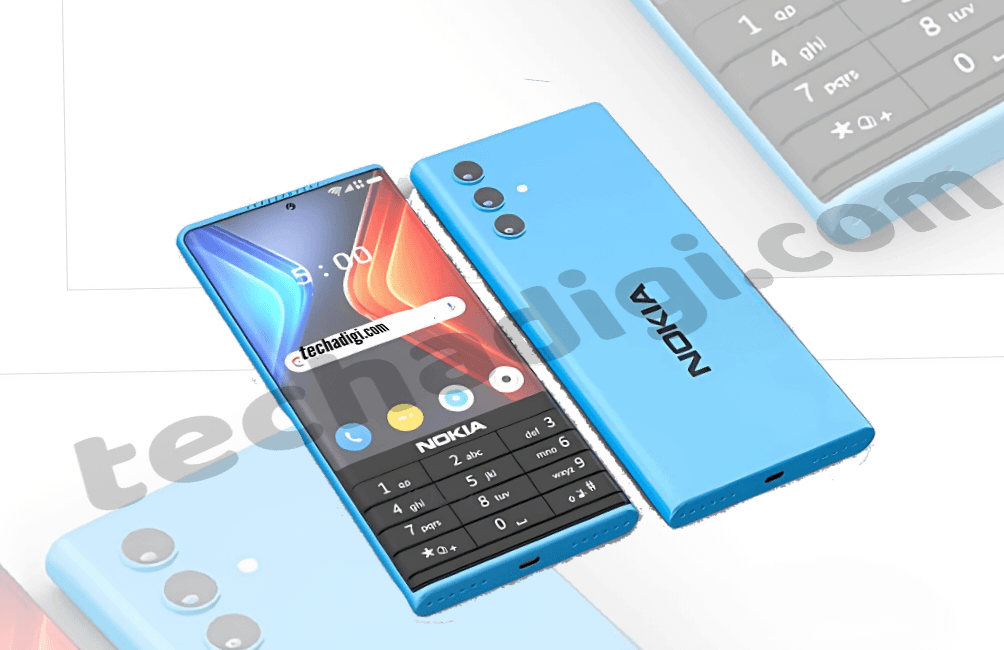In a mobile industry obsessed with folding screens, 200MP cameras, and AI-powered everything, asking for a keypad phone at a store in 2025 feels like asking for a cassette player at an electronics expo. The puzzled expressions, the raised eyebrows, the inevitable “Are you serious?” — it’s all part of the experience.
But then Nokia, the brand that basically invented mobile nostalgia, decides to flip the script — again.
Their latest release isn’t just another throwback feature phone. It’s a stunning fusion of classic utility and modern premium design, built for users who don’t want to sacrifice craftsmanship and clarity just to make a call or send a message. Nokia’s new keypad phone is equal parts homage and innovation — and marketers, tech fans, and even minimalist digital users should pay attention.
Design: Not Just Nostalgia — It’s Premium Engineering
At first glance, this device stuns. The vibrant blue polycarbonate body is unmistakably Nokia — robust, iconic, unapologetically bold. But it’s the details that matter:
- Triple rear camera setup that hints at serious imaging potential
- Flush-fit buttons that feel tactile but never clunky
- Slim profile with rounded edges for modern ergonomics
- Symmetrical speaker grills and USB-C charging — no more micro-USB nightmares
And then there’s the screen: Nokia has borrowed the display panel technology from its premium smartphones, meaning you get high-quality color reproduction, sharp text, and impressive visibility — all in a much smaller footprint. It’s a nod to simplicity, yes, but it’s executed with finesse.
Functionality: More Than Just Calls and SMS
Sure, it’s got physical buttons — but this isn’t just a “dumb phone.” Nokia knows their market. This phone offers:
- Smartphone-lite capabilities: You can browse, message via apps, and even run lightweight versions of Google services
- Battery life that outlasts any flagship — think days, not hours
- Enhanced security features, minimal background processes, and reduced distractions
- Support for VoLTE and 4G/5G connectivity, ensuring modern compatibility
Marketers and tech-savvy users will see the potential here immediately. This is not a device competing against flagships — it’s competing against overstimulation and planned obsolescence.
User Experience: A Digital Detox Without Downgrade
For digital minimalists, Gen Z users craving retro vibes, or even professionals wanting a reliable backup device, Nokia delivers a user experience that is refreshing in its clarity. No endless app updates. No screen addiction loops. Just clear communication, productivity, and a tactile joy that no touchscreen can match.
And thanks to its hybrid nature — capable of connecting to modern networks and running essential apps — it offers enough “smart” without falling into the trap of becoming yet another dopamine dispenser.
Related Posts
Marketing Perspective: A Niche Ready for Disruption
From a marketer’s lens, Nokia is tapping into a goldmine of emerging trends:
- Digital minimalism: More users want to unplug without going off-grid.
- Functional nostalgia: Retro-tech isn’t just cool — it’s profitable.
- Global utility: In many regions, smartphones are overkill for basic needs.
- Reliability over novelty: This phone is a tool, not a toy.
Brands that understand the emotional pull of a physical keypad, or the mental wellness tied to less screen time, will realize why this phone could spark a movement — not just a moment.
It’s a marketing sweet spot: affordable pricing, iconic brand trust, and a product that stands out visually and philosophically in a saturated sea of rectangles.

Closing Thoughts: The Rebirth of a Classic — with a Purpose
The new Nokia keypad phone isn’t trying to compete with the iPhones or Galaxies of the world. It doesn’t have to. What it does offer is something more valuable in today’s tech landscape — intentional design.
It brings physical interaction back to the forefront. It makes communication deliberate again. And it proves that feature phones — when done right — can still be beautiful, functional, and forward-thinking.
This is not just a phone. It’s a reminder that less can be more, that buttons still belong, and that Nokia still knows exactly what it’s doing.


